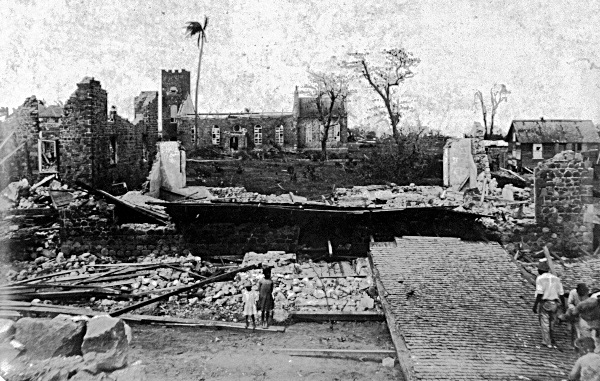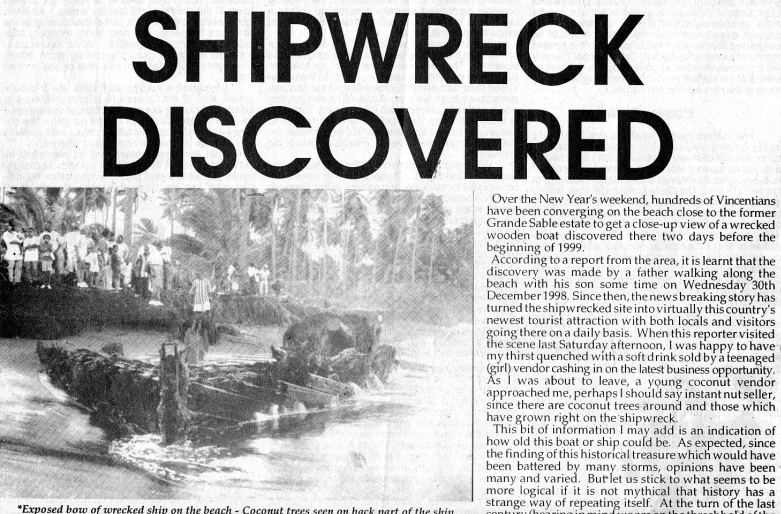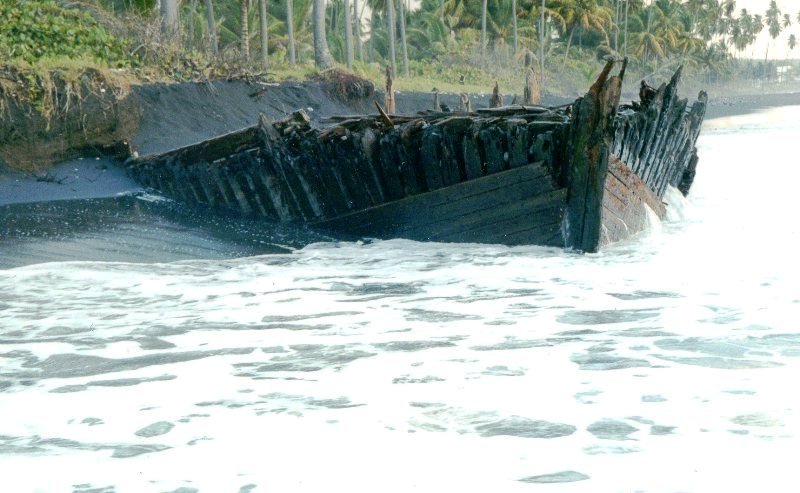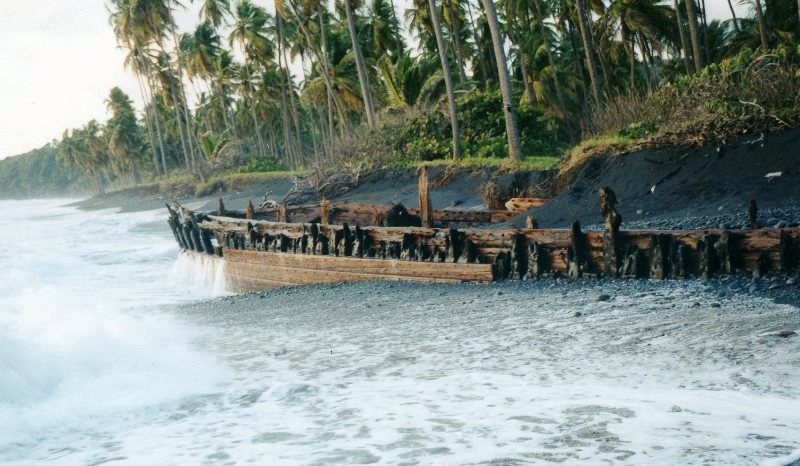
The 1898 Hurricane
In 1898 St Vincent experienced its worst ever hurricane. It devastated the Island. The Windward Islands Hurricane was a strong, destructive hurricane that raged through the Eastern Caribbean Islands in the early part of September during the 1898 Atlantic hurricane season. Between 300 and 400 people are believed to have died in the storm. Damage on St. Vincent was catastrophic.
The storm caused devastating damage throughout the Eastern Caribbean Islands. Barbados and St. Vincent sustained the most damage. No damage figures exist but the destruction was very heavy and widespread in many places. Estimates run in the millions of dollars. Roofs were blown off and numerous large trees were uprooted and weather instruments were destroyed in Saint Vincent. Nearly a foot of rain fell in just 24 hours. Dozens of boats were lost in the harbours and out at sea. The confirmed death toll for St. Vincent was about 300.
The photo shows the devastation caused by the1898 hurricane. The Georgetown Methodist Church is completely flattened. The Anglican church can be seen in the background. Click on the image to enlarge.
Not many Vincentian families have had the distinction of both husband and wife becoming Head Teachers. That was achieved by Mr Lennox Lewis and his wife Claudeth, both of whom was born in Georgetown.
Ship Uncovered on Georgetown Beach
This ship was discovered on Wednesday 30th December 1998.This was an amazing discovery and an opprtunity missed to remove and secure the wreck as a tourist attraction, before most of it was removed by locals or reclaimed by the sea. This particular ship could also be linked to a similar discovery in Langley Park, some years before which was said to be a victim of the devastating 1898 hurricane. Remnants of the ship near Grand Sable still exist among the coconut trees today.
If you look at the photo carefully, the front of the ship is facing the sea. So it begs the question, was it really a wreckage that drifted to land or was it stationed there? just a thought.
1943 Plane At Grand Sable Estate
I can remember as a child my great grand mother Alice Sutton "Mama Nenen" telling us about ane aroplane that crashed among the coconut trees near to the Grand Sable Estate (Mount Young) well before I was born. She was apparently at the scene along with other locals and would tell us word for word what the wounded pilot had said as he lay on the ground dying.
Twenty years after the crash there were still remnants of metal scattered in the area. It was a story that have always stuck in my memory. As if by faith I recently came across a photo of the crash. It was taken by Clare Paynter, the first female photographer in SVG.
According to the news report of the day, 17th April 1943, the World War Two plane hoovered around Georgetown before crashing among the coconut trees.
Like father like son - Sony Child
Sony Child, was a Scottish land overseer, in Georgetown, during my youth in the Sixties. He was the son of Frankie Child, manager of the Grand Sable Estate. Many accounts have been given about the abusive behaviour of his father Frankie Child, towards the women on the plantations. Sony, like his father wasn't a pleasant man. He distanced himself from the locals and secured himself in his Montague mansion. He would regularly patrol his banana fields with his gun looking for trespassers. His attitude to the cane cutters was so bad that it is no wonder he was almost killed by them during the 1960s upheavals. My great grandmother, told me this story of an incident with Sony Child.
"Me and Petti Goodridge was walking near the banana field and noticed a banana tree that fall down. We cover up the bunch of green bananas with banana leaf and leave it fou ripe. When we go back a week later the whole bunch of bananas was chop up."
Listen to an account below of how Sony Child, was beaten up by a mob of workers. Evy Pitt, a tractor driver for Sony, was said to be in the middle of the altercation. There is also a short narrative of how some of Grand Sable estate lands were sold.
How Grand Sable lands were sold.mp3
How they beat up sony child.mp3

N'dambi, "most beautiful" is a place where handmade greeting cards and invitations come alive.
Many years ago while on vacation back home, I met and became goods friends with Three young ladies from Georgetown. Tamara, Josette and Coleen. All Three girls were close friends at the time and my first impression of them was how bright and focused they all were. I lost contact with Coleen and her sister Josette but Tamara and I kept in touch.
Tamara was Eight years old when I first met her. Through dedication and a clear focus on her vision for the future, Tamara went on to graduate at the highest level in English and English Literature. A couple of year ago Tamara made a few personalized invitation cards for a friend's party, she was over wellmed by comments of how good they were. Here was an opportunity to develop something unique and she grabbed it with both hands.
N'Dambi Cards are now sold in stores and hotels throughout St Vincent and the Grenadines. They are also available to buy on line. I had the previlege of seeing some samples of her cards, and they are very special indeed. Here is what Tamara had to say.
"I've always loved Scrap Booking. It is one of the most relaxing hobbies I have ever discovered. In essence, I think this passion has blossomed into an obsession with card making. I've always believed cards can lighten and brighten any day (and I speak from experience) and so, it is my hope that I can make a card that can add a touch of sparkle or sheer joy to someone's day, in some little way."
She is now more famously known as N'dambi Providence. Please click on the display case above to view the N'dambi home page and see more of her eye catching products.
Henry Crichton, born Rabacca, 1888 was the first Vincentian to operate a regular daily passenger bus service from Georgetown to Kingstown and back. The Government gave him a contract to carry mails between Kingstown and Georgetown.
Ivy Joshua the first female to be elected in the St. Vincent Parliament lived in Georgetown. 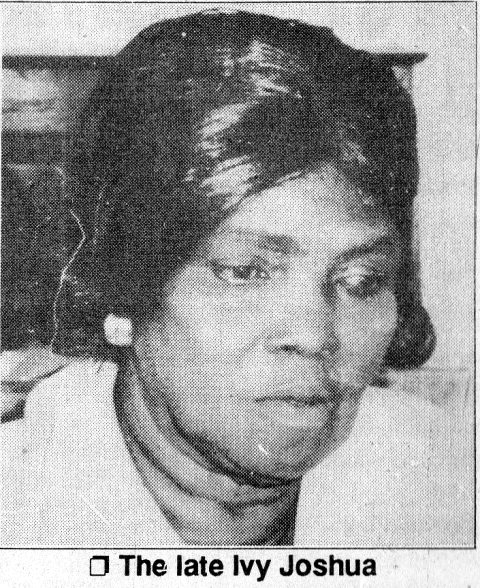
Ivy Joshua was born in Grenada on December 25, 1924. She was was first elected in 1957 and represented the North Windward Constituency. On September 12, 1957, Mrs. Joshua won that seat by a margin of 2,286 votes to 458. She thus, at the age of 32, became the first woman member of the Legislative Council in St. Vincent & The Grenadines.
Of her days organizing for the Union, Mrs. Joshua had this to say- “I used to go around and talk politics to the people and show them their rights, going into the areas where the working people are. People used to get seven cents a day and I used to talk to them and tell them that is no money for them, and they will have to join up in a Union”
Many of the people she represented lived in poverty in the Island’s Carib district, accessible only by foot or by donkey. Mrs Joshua was interested only in the lives of the people. She wanted to make sure that they had jobs and that their children had food to eat. According to a close friend of hers she spent all the money that she earned on the people, though she had no children of her own.
In 1962, Hon. Ivy Joshua led the turbulent Mt. Bentinct strikes in which the workers were demanding holiday pay.The picket line was headed by Mrs. Joshua. In the eyes of the plantocrocy, as wife of the Chief Minister who was off island at the time, and as a member of the Legislative Council, Mrs. Joshua’s participating and joining the workers’ struggle was not acceptable. Perhaps it was acts like this that led to Mrs. Joshua securing her seat in six consecutive general elections, a feat that is yet unmatched.
In spite of the problems she encountered because of class issues and persecution by those who saw her as illiterate and unfit to hold public office, Hon. Ebenezer Theodore Joshua in commending his wife, insisted that “She had done more for the poor people of the island than a lot of the high heeled women”.
Ivy Joshua, lived her later years blind and in virtual seclusion. People scarcely visited her now that she had nothing more to give them and the young people knew nothing about her.
The Government later named a stretch of road in the Carib region “The Ivy Joshua Highway”
Your Response to the information above.
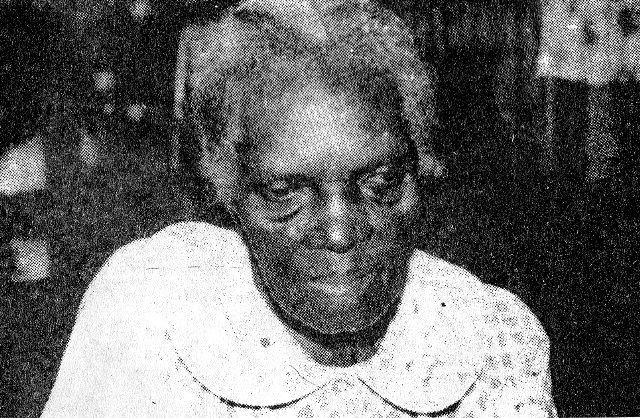
In 1935 there was a major uprising in Georgetown
On October 21st, 1935 a riot broke out in Kingstown and spread to a few other areas of the island. The cause of the riots was partly due to an increase of import duty on basic necessities low wages and improvised standard of living in the period of depression that followed World War I. Georgetown having previously been identified as one of those areas reeling under economic hardships, where merchants and shopkeepers complained that "things were very bad" and that "there was little money in circulation.
Confrontation began on the 7th September. Labourers at Mt Bentinck set fire to a house and sabotage a water wheel to ensure that the fire could not be put out quickly. Arson became a major problem on estates along the Winward coast. Their anger was not directed at their places of work, but at an insensitive administration. Rumours circulated that rioters were intent on destroying Georgetown, killing all white men and saving the ladies to be their wives. On hearing this all white women from Georgetown were sent off to Kingstown by boat.
At the Grand Sable estate on the border of the town of Georgetown, estate manager Mr Frank Child was hit and wounded. The District Medical Officer had been prevented for quite a long time from getting to him in order to render necessary medical assistance. Crowds had gathered around the Mt Bentinck estate and shop and moved reluctantly only when challenged by the police constable and his rural assistant. Large crowds however roamed the streets of Georgetown and smashed shops, and damaged the police station and post office. Groups from the Byrea and Grand Sable areas arrived and continued the rampage.
The 1935 St Vincent Riots the full account by Dr Adrian Frazier.
WHAT A GREAT STORY!
I posted a black and white photo on my Georgetown, Face Book page a while back of a young lady holding a baby, who many of people identified as Hilda, from Dixon. Well low and behold a good friend of mine Arnold DaSilva, managed to track down current day Hilda, and that same baby after over 40 years. What's ironic about this is, it was Arnold who also took the black and white photo all those years ago. Keep visiting the page for more great posts.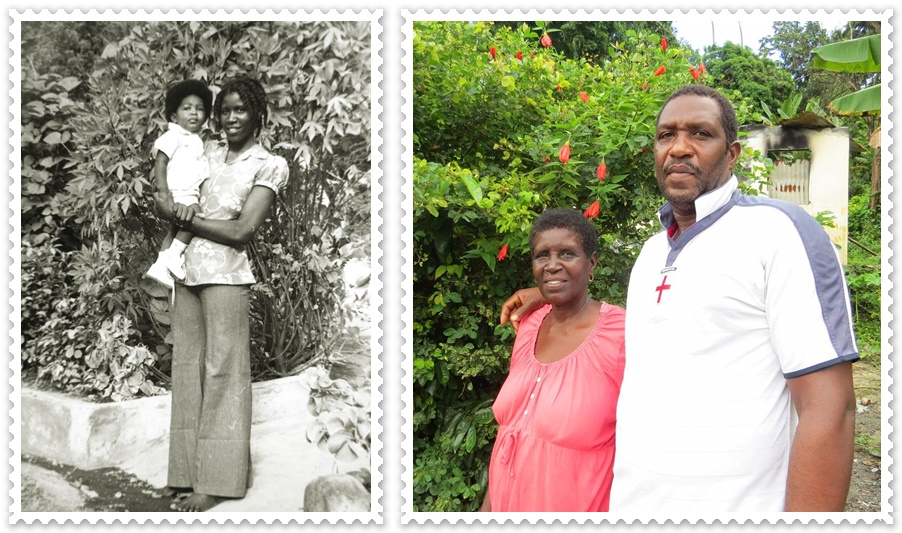
Doctor Gideon Cordice
It is very rare for a generation of people to talk about an individual and not have a bad word to say about that person. Dr Gideon Cordice was such a person, everyone who knew him lament about his kindness and empathy for the well off and in particular the poor. I have heard stories of how he would often tend to poor people free of charge and was always at hand no matter what time of night.
Here are some comments about this special man.
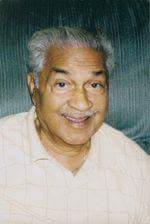
Veronica DAVIDSON
Dr. Cordice, has been a family friend before a doctor to the Davidson family back in the fifties when we all resided in Kingstown. I remembered he was in Brooklyn and my father was at home not feeling well Dr. Cordice, who was visiting heard and came over to the house to see Papa and examined him at home recommended some kind of over the counter medication. He was our family doctor for a number of years, he visited my Grandma before she passed in 1969. In my eyes he was a saint to the young and old, poor or rich. I worked for him in his office and it was a pleasure to see him interact with his patients young or old, man, woman or child always leaving his office a little bit more happy than when they came in. The last time I saw and spoke with him was when I took my father back home to be buried and my good friend Gids as he affectionately called was there as always with words of comfort. He was one of the best doctors who ever resided and worked in SVG in my opinion. May he forever rest in perpetual peace.
Laverrne Juliet JONES
This man was not in his profession for the money but for the love of people. His sister lived in our neighborhood and was close to my Grandmother and great aunt. My Ggrandmother got sick so his sister send us to him, that gentleman NEVER took a penny from my Grandmother throughout her visits.This man was not in his profession for the money but for the love of people.
Clive BISHOP
Him and Edson Bowman of Pharmco were men of integrity who loved what they did and did what they loved regardless of if they were paid $$$ or not. My late parents spoke highly of them. I knew him personally. He was like an uncle to I . His son Kenny and I were in Grammar School together. A man who did quite a lot of good for SVG .
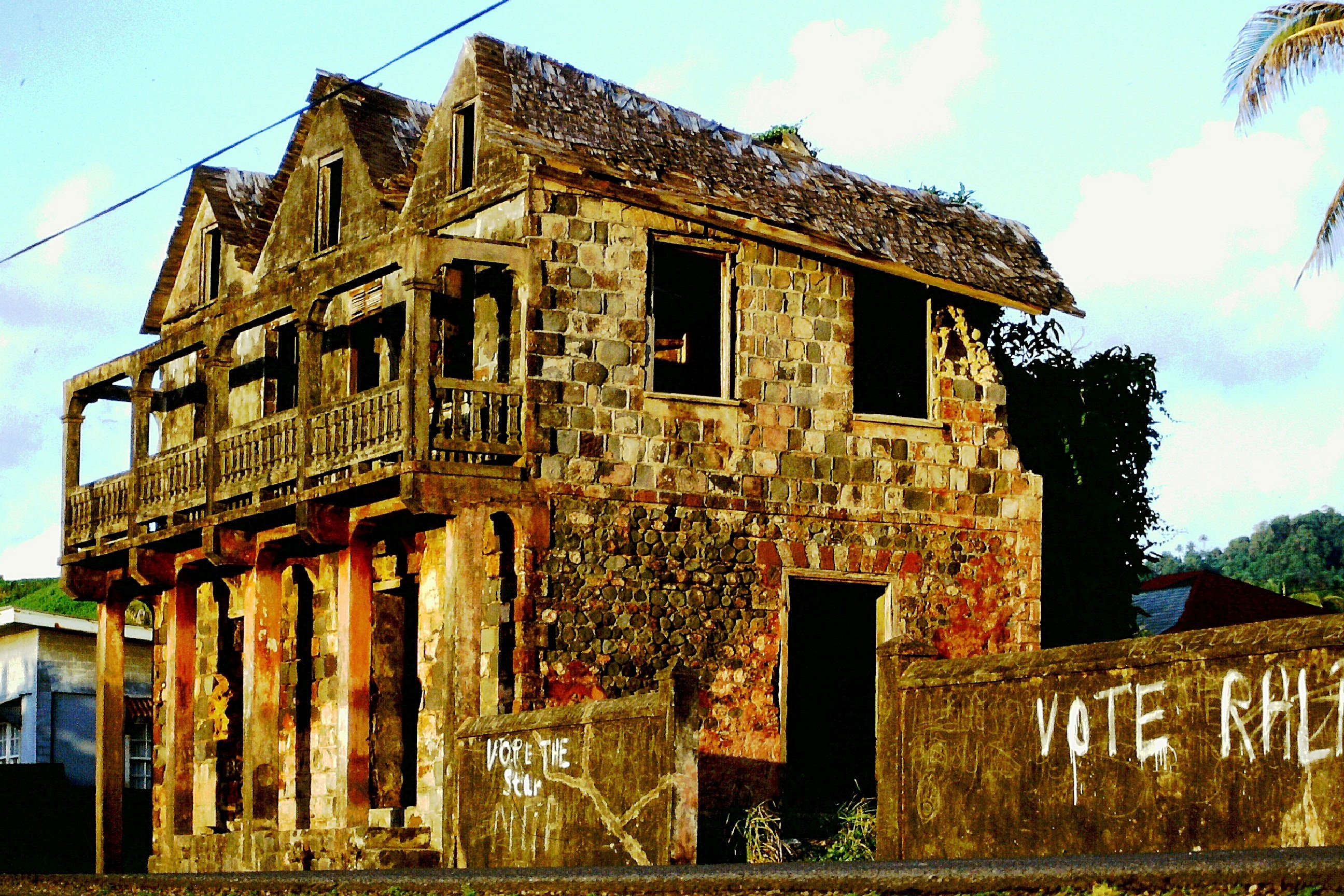
Roslyn JOHN
My mother grew up in Georgetown as my grandfather, Henry John, was a manager of the sugar factory back in the day, she also attended Georgetown primary school so she was childhood friends with people like Dr. Cordice, Milton Cato, Ms. Duncan and quite a few others from the Georgetown area that I can't remember their names. As grown ups she and most of them stayed dear friends, Dr. Cordice was one of those dear friends. Dr. Cordice would attend us, my mom's children in his private clinic without a charge. My mom worked at the Mental Hospital too, along with Dr. Cordice when he was doctor in charge of that institution. From then to now, Dr. Cordice and my mom, God bless their souls, must be turning in their graves to see the state of that institution today. Dr. Cordice sister was also a dear friend of my mom.
Faye CATO
I also knew him very well being that I was born in Georgetown.My Mom was a Nurse, we also lived in Villa so knew some of the kids who lived with his sister in Villa know that house in G/town very well.
Shakers Religion
The church played a major part in the suppression of the Vincentian people. Most people growing up in the 50s-70s will have no doubt heard about or seen members of the Shakers or Converted religion as we called it. My earliest memory of a converted member is of someone called mother Howe from Chili Village. Their prayer house used to be located at the top end of Chili main road. They use to march through the streets ringing their bells and preaching all kinds of messages.
Shakers in St Vincent
Some time around 1846, a new religious group was formed among labourers from Calder estate who called themselves "The Wilderness People" they later became known as "Shakers". In 1856 they had also began to refer to themselves as the "Penitents of the new light". In 1881 missionaries reported that Shakerism had taken over in villages and estates around Georgetown and that in Overland Village, all the inhabitants had been converted.
Authorities feared the Shakers, and set out to eradicate them by destroying the Wilderness chapel in Mt Bentinck. In 1908 the local officials decided that they should deny Shakers acceptance as a religious group and prosecute them as a public nuisance and by 1912 the sect was declared illegal. Anyone caught taking part in this practice were imprisoned.
The sect was seen as dangerous because unlike the Anglican and Methodist churches, it was out of European control. It gave disaffected members of society the chance to meet and worship without the interference of any Europeans. The leaders and followers were all Afro-Caribbean labourers therefore they were able to easily convert others to their sect. In 1938 these prosecution ended in St Vincent but it was not until 1965 the ordinance was actually repealed. The man mainly responsible for the reemergence of the sect was Mr E T Joshua.
Montague House/Grand Sable/Georgetown
History has shown, that colonisers are very big on legacies, they love to leave their mark behind like a stain, hard to remove, be it by constructing buildings, renaming places or by written word. This is evident though out SVG, but I want to give you one example of this in Georgetown.
Allyo, heard of the name Brown’s Town right? And what about Montague House? Well there were Three generations of Browns/Browne who owned all the lands from Mt Young up to the Caratal River, during the Eighteen Century, the whole of that area was known as Grand Sable. They were all Slave owners. The father was a dodgy character and the sons were both Priests at the Georgetown Anglican Church.
This post is not to sing their praises, it is merely to show the link between them and some of the structures that are still standing today. So here is a brief summary of their time line. The first was Thomas Brown/Browne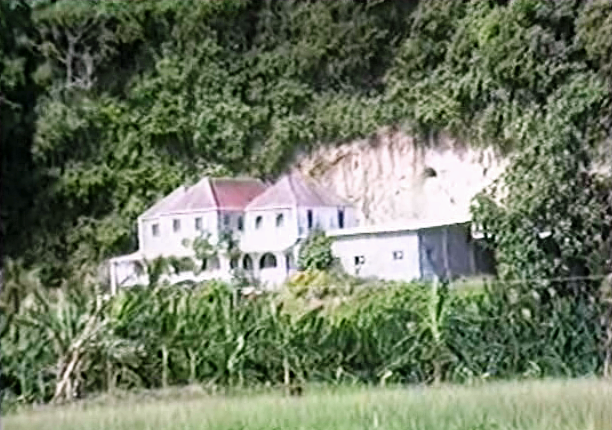
The King of England at the time gave him 6,000 acres of land on November 10, 1804, and he came to St Vincent from the Caicos Island, with his family 1805 and transported his Negroes and white overseers to the island.
He went to England and stayed until 1817 due to legal problems. (He spent time in jail) He returned to St. Vincent, with his mother in law and three children and built a mansion for his family on the estate in an elevated position giving uninterrupted views of the sugarcane fields. ( The photo of the house was taken in the mid 70s)
This building is still there and has since been renovated. It is now owned by the Balcombe family, Sonny Childs, owned it before him.
He named his house Montague House, honoring his ancestor Sir Anthony Browne, Viscount Montague. He died on St. Vincent, on August 3, 1825 at the age of 75. He was buried somewhere on The Grand Sable Estate.
His First son, Rev. Thomas Alexander Murray Browne (1792-1839) moved his family to St Vincent, in 1824 where he had inherited the Grand Sable estate, and bought further land. He died in St Vincent 1839. He is buried in the church yard.
The second son, Thomas Alexander Browne, also a Reverend, sold Grand Sable in 1846 and returned to England.
So you see why they called a certain part of the area Brown’s Town? I say they because I don’t know who actually named it so. While Brown was living in the Caicos Island, and apparently named part of the area Brown’sborough.
Source: Times of the islands and www.ucl.ac.uk
Rakhal Fraser Elias: Yes my wonderful cuz Terry; I see that you have done your research in great details! Big love and respect to you sir! I have a 16 page history of Montague House in my unfinished book: "PALMS IN THE WIND." It is under the chapter: "The European People -
Steve Lougheed: Rakhal Fraser Elias, I hope you guys don't mind me being a fly on the wall during this momentous conference. Cheers to you both. L.O.L
Rakhal Fraser Elias: Steve Lougheed, you are most welcome cuz! You too have taught me a lot; and are still continuing to amaze me, with information that had eluded me for decades! Big up to you and Calvin, man!
Claire Haynes: Thanks for sharing. I love history, always did. We had a neighbour at what's called FRENCHES HOUSE. They were still there when I was about 4 years old. Also a priest in the mix. I am sure the history is similar. My grandmother was their washer.
Jannette Burke: Thank you guys for the more information. I left SVG after the 1962 riot & the sugar cane factory thing. However, in addition to Mt. Bentinck, Balcombe had an Arrowroot factory at San Souci. Don't know more.
Laverne Alexander Baxter:Thanks for the knowledge.
Fraser Sonny Fraser: Nice Historical piece.
Vincy Shelz King: Interesting piece of History
The video below is a converted river baptism in St Vincent. Video is courtesy of Andrez Breen Quow.
The Jack Iron Tragedy of Sandy Bay 1969
Known as the a Jack iron tragedy, 19 Vincentians died, two were blinded and as many as 600 others fell ill as a result of poisoning through drinking the aviation fuel between November 22 and 23, 1969. The aviation fuel had been stored in drums aboard the 90 tonne Schooner Ruth 114, which was en route to Martinique from Trinidad. On Wednesday, November 19,1969, the schooner ran into heavy weather and, having suffered damage to the sails and rudder, sprang a leak.
Unable to stem the flow of water, the crew abandoned ship and made for the beach at Colonarie on the Windward coast of St Vincent, at approximately 3 a.m. on Thursday, November 20. The crew arrived in Colonarie and informed the local police. Despite a search by two ships from Kingstown the vessel was not sighted and finally, having drifted North for several hours, finally ran aground at Big Level, a beach immediately adjacent to the east of the village of Sandy Bay.
A small group of men from the village managed to board the boat and began a salvage operation to remove the cargo and any items of value. This consisted of a small quantity of rum in wooden casks as well as the main cargo of 100 drums of methanol and 150 drums of aviation fuel. On finding the rum the men opened the casks and began to drink it. They then turned their attention to the other drums and sampled that too. One informant told how, having witnessed what was happening, he warned the men about drinking the fuel but was told that he was just a boy and didn't understand drink.
This was Jack Iron they claimed, a strong rum made in the Grenadines. The schooner was by then beginning to break up and the drums were floated and dragged ashore. By this time a large group of people had assembled and quickly began to distribute the liquid amongst themselves. News of the wreck had spread rapidly and it was believed to be a piece of good fortune for the inhabitants of the area. As news of the unexpected windfall spread people began to arrive not only from Sandy Bay but the nearby village of Owia. That weekend the community could have a party thanks to the boon they had received. Within 24 hours the situation changed as the lethal concoctions devastating effects became apparent. People began collapsing from poisoning.
A frantic operation began with those unaffected trying to administer sugar and water to the sufferers. This prompt action may have saved many lives, but the toll was still heavy. Among the 19 who died were three children between the ages of 11 and 12, The Vincentian newspaper of November 29, 1969 reported.
The bodies of the victims of the tragedy were laid out in the small square outside of the post office in Sandy Bay, whilst the survivors were taken to hospitals, in Kingstown, Georgetown and Chateaubelair.
The situation had been made worse by the absence of both telephones and electricity in the north of the island. Getting the sick to hospital, once the alarm has been raised, was made more difficult by the tortuous nature of the coastal road to Georgetown some eight miles away. Fortunately the Rabacca Dry River was not in flood and vehicles were able to cross the shallow ford in relative safety.
According to The Vincentian Newspaper, Kingstown was up in uproar on Monday, November 24, as ambulances arrived with living victims for the hospital and news of dead bodies in the villages. The Premier, Robert M Cato, the Minister of Health and the Acting Senior Medical Officer, along with a team of doctors and nurses from Kingstown visited the area that same day.
The newspaper also listed the names, addresses and ages of the dead and the names of those warded at the General Hospital in Kingstown. The dead ranged in age from 11 to 60 years old and were from the villages of Orange Hill, Owia, Sandy Bay and Rose Bank. The Vincentian said there were eight crew members on board the wrecked schooner, with the captain being Kenneth Richardson of Anguilla. According to the newspaper, the captain said that he was shocked to hear that persons had drunk the contents of the drums, since they were plainly marked in large red letters DANGER.
Report taken from an account by Nannekke Redclift published by UCL Press,
